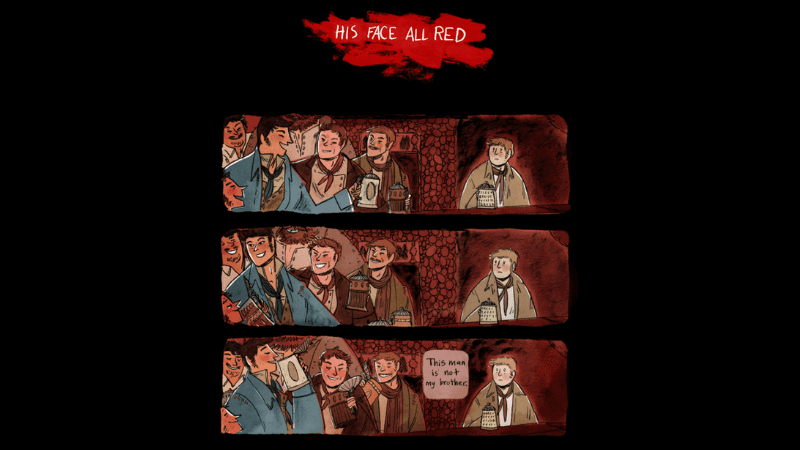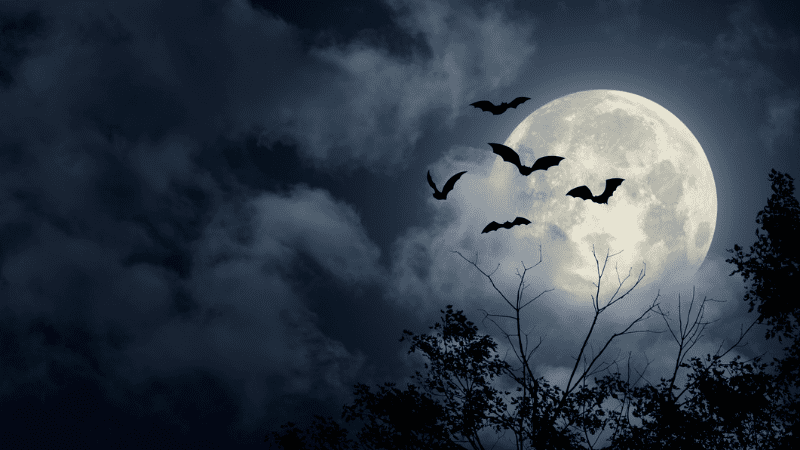I always loved walking into English class in October and discovering my teacher had a scary short story for us to read. Sometimes, they’d dim the lights and have creepy music playing softly in the background. We’d all dive in, eager to see if it really was as scary as we hoped. When I became an English teacher, I continued that tradition. And now I’m always on the lookout for new, spooky short stories. This year, I found a few new ones I’d never heard of before, as well as rediscovered some classic, scary short stories I can’t wait to show my students. Here are the ten scary short stories I was most excited to find, as well as how a teacher might use them in a lesson.
1. Hello, Moto by Nnedi Okorafor

This scary short story takes place in Nigeria. The three main characters are all Nigerian women with a powerful secret. As the main character desperately tries to undo the consequences of her terrible scientific experiment/invention gone wrong, your students will definitely pick up on some similarities to Frankenstein and other classic horror stories.
In class:
Lessons on characterization, mood/tone, and thematic ideas like the consequences of scientific experimentation. Comparisons to other horror or science-fiction stories are easily made as well. It would be an excellent companion piece to a unit studying Frankenstein.
2. A Collapse of Horses by Brian Evenson

In this creepy, atmospheric piece, the narrator wonders if the things he sees are real or if he has lost his mind. His house seems to be changing. His family too. Eventually, he realizes there’s nothing and no one he can trust. And we realize that maybe we shouldn’t trust him either.
In class:
This tale is short on stereotypical scares and high on a slowly building sense of dread. Because of this, it’s better suited for high school students. It would be a perfect piece to begin or elaborate on a lesson about unreliable narrators as well as how authors develop mood and tone. If you had a scary short story unit, it would be excellent as a modern companion piece to “The Tell-Tale Heart” or “A Cask of Amontillado.”
3. The Flowers by Alice Walker

This is another short story better suited for older students. Alice Walker’s coming-of-age story about a young Black girl named Myop discovering the chilling evidence of a long-past lynching isn’t one to hand out without a lot of preparation. It is a surprisingly powerful story, especially when you consider it is only two pages long. Walker’s use of setting as a way to illustrate how Myop’s worldview changes is definitely worth sharing with your students. Just be prepared for some heavy conversation about the history of racially motivated violence and its effects on young people.
In class:
Have students pay close attention to how Walker’s descriptions of the setting change as the story progresses and why she makes those choices. Discuss how Walker uses irony by writing such a dark story and setting it during a bright, sunny summer day. Ask students to determine what they believe are important thematic statements for this story.
4. His Face All Red by E.M. Carroll

It’s always beneficial to share a good graphic novel with your class. I was excited to find this one by E.M. Carroll, a graphic novelist who writes horror stories. Not all of his work is school-appropriate, so this scary short story is a perfect find. The story revolves around a young man who is convinced his brother isn’t who he says he is. He knows this because … wait for it … he murdered his brother earlier that week.
In class:
Perfect for discussions about how graphic novels differ from “regular” novels or for an examination of how authors show literary elements like characterization, setting, suspense, or dialogue in graphic novel form. Discussions of unreliable narrators or any unit with elements of suspense could also add this story as a companion piece.
5. The Lottery by Shirley Jackson

Ok, this one’s an oldie but a goodie. I’ve never met anyone who doesn’t have an immediate reaction to the end of this scary short story. There’s something about what Jackson leaves out of this tale of a small town and its strangest tradition that is almost infuriating. There’s no real violence in this story; it’s more implied, which makes it perfect for middle grades. Fair warning, though, it’s also what will make students respond so strongly to the story. Be prepared for students who love the open-ended ending and some who absolutely hate it.
In class:
This would be a wonderful text to assign as the core text for a Socratic seminar. All students will be able to come up with at least a few questions about the story and its characters. More complex questions about peer pressure, mob mentality, and traditions would add to the depth of the discussion. A fun creative-writing activity might have students write a prequel that explains the origins of the lottery or challenge students to write an open-ended short story of their own.
6. Lacrimosa by Silvia Moreno-Garcia

Mexican-Canadian author Silvia Moreno-Garcia might be better known for her full-length novel, Mexican Gothic. But she also can spin one heck of a scary short story. In this story, readers will follow a Mexican man living in Vancouver. Although he is relatively successful, he is unhappy. Guilt over not doing more to support his family in Mexico, he begins to believe he is being stalked by a vengeful spirit.
In class:
Because of its obvious connection to the horror movie La Llorona, students might enjoy this new look at a story they’re already somewhat familiar with. The question of whether or not the main character is truly being haunted or if it’s just a metaphor for his guilt will certainly lead to a higher-level discussion about his motivations. This also would be a great piece to use for discussions about mood/tone.
7. The Landlady by Roald Dahl

This is another classic, but it will be new to many of your students. They’ll get a kick out of learning just how macabre the man who wrote Charlie and the Chocolate Factory really was. While there’s no overt violence, the idea that the danger comes from the person you least suspect makes this a perfect addition to your collection of scary short stories.
In class:
Finding a narrative students are willing to reread after they’ve finished reading it a first time is a challenge. This one, however, is one I’ve never had trouble with. Students love returning to this story to find the first moments when Dahl foreshadows that everything is not what it seems. You can also use it in lessons about how authors develop characters through dialogue. The landlady gives herself away several times throughout the story if you know where to look.
8. Haunted by Harris Tobias

Looking for a new Halloween tale for your younger students? This haunted house story is perfect for students who can handle a little bit of scary, but not too much. In this story, the haunted house is trying to send a message to its new owner, but it’s not the message your students might expect from a typical scary story.
In class:
Several great conversations could come from a reading of this story in class. What can go wrong if we jump to conclusions and how we should ask for help when we’re afraid are two excellent topics for younger readers to tackle. Having students create their own versions of spooky creatures that are just misunderstood would make for a fun Halloween lesson as well.
9. Cow’s Head retold by S.E. Schlosser

Another great choice for younger students, this retelling of a Ukrainian folktale has just enough spooky elements to make it perfect for a Halloween lesson without crossing into truly scary territory. It feels a little bit like Cinderella and Hansel and Gretel mashed together … with a cow’s head.
In class:
This would be an excellent addition to a unit on folklore or fairy tales. Students could be encouraged to make up their own creepy folktale using similar elements to those found in the story. The teacher could also use this story as an extended thinking activity, asking students to identify the similarities to folktales from other cultures.
10. Patient Zero by Tananarive Due

Just creepy enough for middle or high school students without going too far with the “deadly virus” imagery, Patient Zero is the story of Jay. He spends most of his days being taught about the Constitution and edible plants by his teacher and having blood drawn by doctors who seem a little afraid of him. The reader is left to piece together what has happened from the snippets of life Jay writes about in his journal.
In class:
This would be an awesome scary short story for a science teacher to use as a launch for lessons about viruses and asymptomatic carriers. It could also be used as the source material for a Socratic seminar or fishbowl discussion about ethics in times of crisis. What should be done with Jay? If you’ve already introduced the concept of unreliable narrators to your class with stories like “The Tell-Tale Heart,” it could also be useful to show them that unreliable narrators can be unreliable for reasons other than madness, for example, because they’re children who don’t fully understand what’s happening to them.
Looking for even more short stories to share with your class? 51 Great Short Stories to Teach in Middle School
Want more articles like this? Make sure to subscribe to our newsletters!


